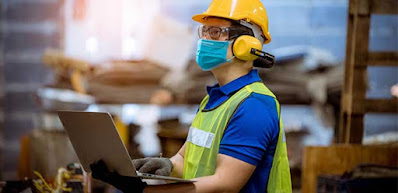Occupational Health and Safety Management Systems - What Are They?
Occupational Health and Safety Management Systems (OHSMS) or Health and Safety Management Systems (HSMS) are the systems or processes used by an organization to manage OH&S. For example, all businesses should have a hazard identification and risk management procedure, describing the:
Why - sets the context and describes why the process is important for the organisation
Who - stipulates the job roles within the organisation with responsibilities under the process
When - gives guidance on the scope of the process i.e. when does it apply
How - describes how the objectives of the process are to be achieved e.g. the tool used to identify hazards
The Why, Who, When and How of a process will vary from one organisation to another depending on what works best for a particular business. What works for a large construction company, may not necessarily work for a small surveying business.
An OHSMS can be made up of a number of components. There are usually core components that all business should manage. These include areas such as hazard identification and risk management, consultation and communication, compliance, incident management and emergency management to name a few.
Other areas that may be part of an organization's OHSMS that depend on the type of work undertaken, include more specific areas such as Working at Heights, Confined Spaces, Excavations and Land Transport.
An OHSMS should be documented for agreement on the process and to be auditable. Writing these agreed processes down on paper is the first step, next, the processes must be implemented within the business so they are used, and implementation normally involves training. The last step is to review how the system is going, identify any shortcomings and make changes as necessary - this is something that will happen over time and is continual to ensure the OHSMS changes as your business changes.
An OHSMS should be developed in consultation with business to get the best outcome. This means consultation between all affected parties and helps a process to be more effective based on what works. This also has the added benefit of increasing the chance of "buy in" or acceptance, as people within a business have had input and will be more likely to follow a process, as they have helped to develop it.
An OHSMS can be as simple or complex as required by a business. Generally however, the aim should be to keep them as simple as possible but contain enough information to spell out the requirements or give guidance to a company to manage its health and safety risks.
For More Info:-->




Comments
Post a Comment